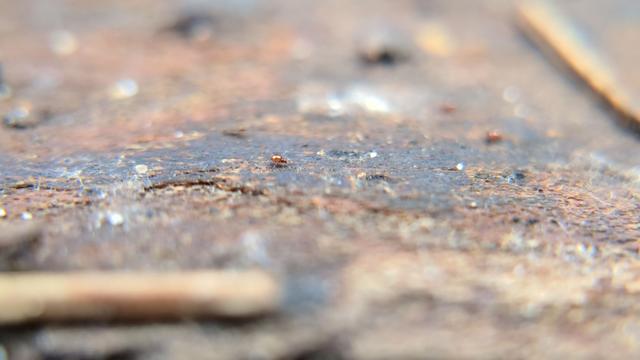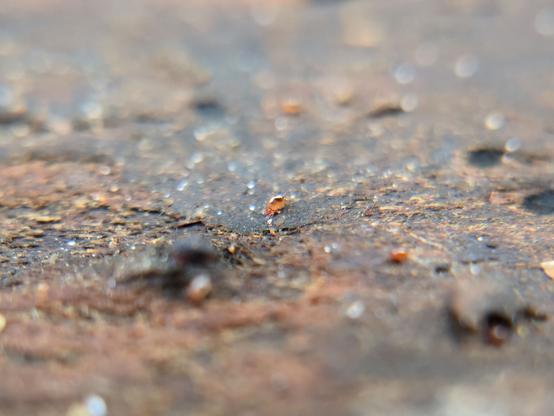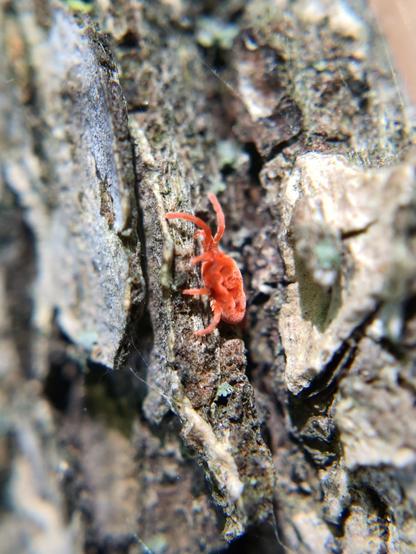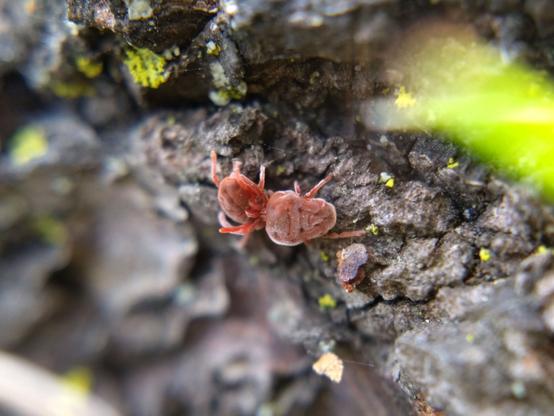#MiteMonday: ever look down and see a bunch of little red guys on the pavement or whatever? Chances are they're long-legged velvet mites (family Erythraeidae) in the genus _Balaustium_. Practically all of their relatives are parasitic on other arthropods as larvae and predatory as adults, but some common _Balaustium_ species are lifelong pollen-eaters. Here's one eating peony pollen I put down.
#DailyMiteVid #Mitestodon #arachnids #mites #Acari #Acariformes #Parasitengona #Erythraeidae







